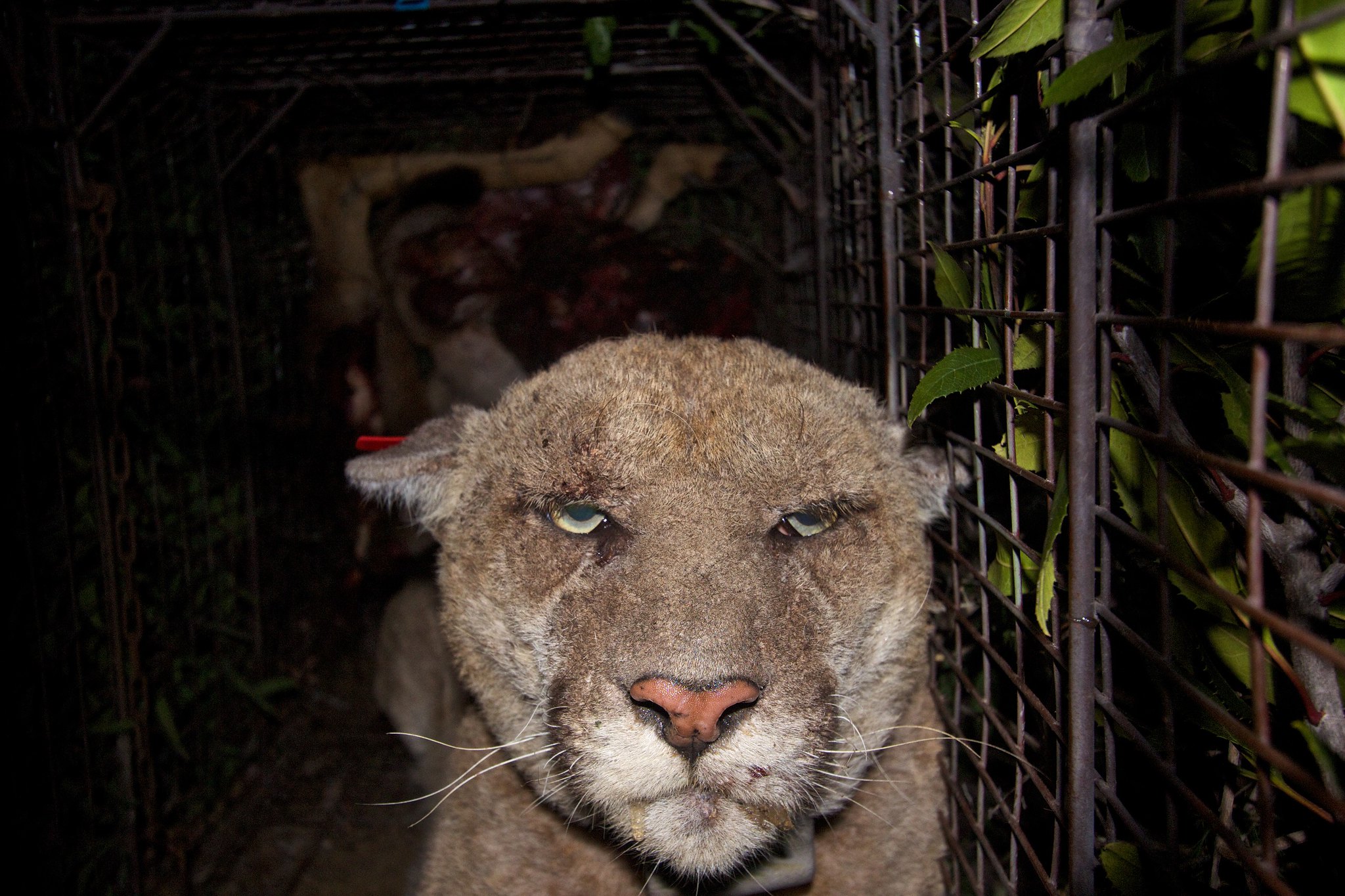21
Apr
California Fish and Game Commission Grants Mountain Lions Temporary Protective Status
 P-22 is being treated for mange; blood tests found anti-coagulant rodenticides, commonly known as rat poison.
P-22 is being treated for mange; blood tests found anti-coagulant rodenticides, commonly known as rat poison.
(Beyond Pesticides, April 21, 2020) Last week, the California Fish and Game Commission voted unanimously to give mountain lion populations in certain parts of the state temporary protective status, and initiate a year-long study to consider permanent safeguards. Mountain lions in California are under considerable threat from a range of issues, including inbreeding, human developments, and the use of hazardous rodenticides. “There’s an extraordinary urgency for action to preserve this population,” said Commissioner Samantha Murray prior to the unanimous vote, according to the OC Register.
According to a study published last year in the journal Ecological Applications, mountain lion populations in Southern California’s Santa Ana and Santa Monica Mountains are at risk of local extinction within 50 years without intervention. Highways and other man-made structures have hemmed in the cougars, resulting in inbreeding that threatens genetic diversity and can result in sterile offspring. Although specific actions under the new status are not guaranteed, it will force changes within California executive agencies.
“For Caltrans, this could include building wildlife crossings over or under existing freeways or as part of freeway expansion projects,” J.P. Rose, staff attorney with the Center for Biological Diversity, the environmental group that petitioned the state for protections, told the OC Register. “For the Department of Pesticide Regulation, this may include re-evaluation of the use of deadly rat poisons in mountain lion habitat.”
Rodenticide use poses a serious risk to the dwindling populations of mountain lions in Southern California. In early 2019, a mountain lion dubbed P-47, living in the Santa Monica Mountains, was found dead by the National Park Service after exposure to rat poison. “It’s unfortunate to see an otherwise healthy mountain lion lost from what appears to be human causes,” said Seth Riley, a wildlife ecologist with the Santa Monica Mountains National Recreation Area to the LA Times. “In P-47’s case, it’s also a big loss because we don’t believe he had yet mated and passed along his genes, which would have been valuable since he had ancestry from north of the Santa Monicas.”
In 2018, another three-year old mountain lion, P-55, infamous for its ability to crisscross California’s 101 Freeway, died of suspected rodenticide poisonings, shortly after another cougar, P-41, was found dead with six different pesticides detected in its liver. A similar rodenticide poisoning nearly killed mountain lion P-22, which, for a time, roamed the Hollywood Hills along Griffith Park’s Hollywood sign.
These poisons, used to kill voles, rats, and other rodents, work their way up the food chain, posing risks at each trophic level. A study published in 2018 found that chemicals like bromadiolone, a second generation rodenticide, can in fact function as “super-predators” within ecosystems by limiting prey to other predators, and making the prey that is available hazardous to their health. “Controlling voles with bromadiolone reduces the amount of food available to predators and increases their risk of secondary poisoning when they eat the contaminated rodents,” said study coauthor Javier Fernandez de Simon, PhD.
Last year, the Center for Biological Diversity took steps to sue the California Department of Pesticide Regulation (CDPR) over its continued allowance of four rodenticides. Information published by CDPR finds evidence of rodenticides in 88% of bobcats and 90% of mountain lions tested.
Broader restrictions are also being advocated in the state legislature. AB 1788, which banned the sale of second generation rodenticides, came close to passage last year but was ultimately withdrawn after intense lobbying from chemical companies.
The new protections are an important means to move forward regulations that will protect mountain lions and other threatened predators in the state of California. There are wide range of alternatives to hazardous rodenticides for the management of common pest problems. For more information on how you can do your part to protect local wildlife from unnecessary poisoning, see Beyond Pesticides ManageSafe webpage. And for additional data on the threats pesticides pose to mountain lions and other species, see our webpage on Wildlife.
All unattributed positions and opinions in this piece are those of Beyond Pesticides.
Source: The OC Register










